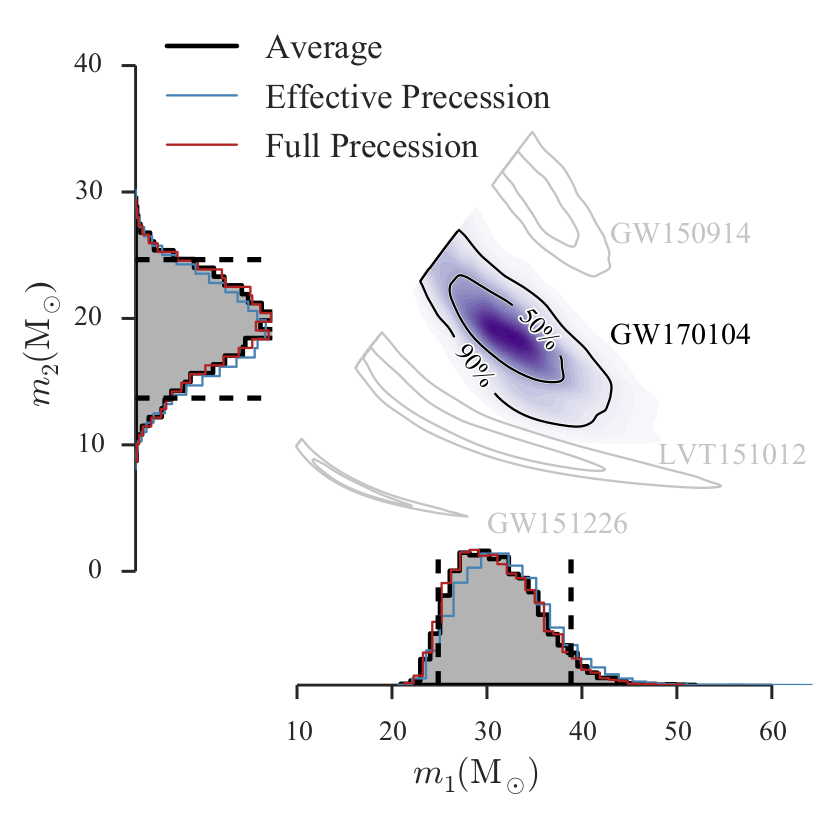Results confirm new population of black holes

A third detection of gravitational waves, ripples in space and time, has been made. As was the case with the first two detections, the waves were generated when two black holes merged to form a larger black hole. The new-found black hole, located about 3 billion light-years away (twice as far away than the two previously discovered systems), has a mass of about 49 times that of our Sun, an intermediate value between those previously detected in 2015 (62 and 21 solar masses for the first and second detection, respectively).
The discovery is described in a new article accepted for publication in the journal Physical Review Letters (see also the supplementary material). The event occurred during the current observing run of the twin LIGO detectors in Hanford, Washington, and Livingston, Louisiana, which began November 30, 2016, and will continue through the summer, when the Virgo detector in Europe will join to improve the pointing capability of the entire detector network.
"With this third detection we confirm the existence of an unexpected population of stellar-mass black holes that are larger than 20 solar masses," says Jo van den Brand of Nikhef and VU University Amsterdam, the newly elected spokesperson for the Virgo Collaboration, a body of more than 280 international scientists who perform gravitational waves research together with the LIGO Collaboration. "The entire LIGO and Virgo scientific collaborations worked together to make these amazing detections of such extreme events that took place billions of years ago.”
The third detection, called GW170104 and made on January 4th, 2017, was carefully analysed by the LIGO Scientific Collaboration (LSC) and the European-based Virgo collaboration. This is a group of more than 1200 researchers from more than 100 scientific institutions, spread over four different continents. Previously, this worldwide effort successfully led to the first-ever direct observation of gravitational waves in September 2015 during the first observing run of the LIGO detectors. Then, a second detection was made in December 2015. In all three cases, the detected gravitational waves were generated by extremely energetic collisions of black hole pairs – events that produce more power during the instant before the black holes merge, than is radiated as light by all the stars and galaxies in the observable Universe at any given time.
The newest observation also provides clues about the directions in which the black holes are spinning. As pairs of black holes spiral around each other, they also spin on their own axes. This is similar to a pair of ice skaters spinning individually while also circling around each other. Black holes can spin in any direction. Sometimes black holes spin in the same overall orbital direction as the pair is moving – what astronomers refer to as aligned spins – and sometimes they spin in the opposite direction. What’s more, black holes can also be tilted away from the orbital plane. The data analysis provides evidence that at least one of the black holes may have been non-aligned to the overall orbital motion, offering hints about how the pair formed.
More details on the Polish Virgo group website, a member of the LIGO-Virgo collaboration: https://polgraw.camk.edu.pl
or
LIGO pages
Links:
Publikacja: http://link.aps.org/doi/10.1103/PhysRevLett.118.221101
Supplementary material: http://link.aps.org/supplemental/10.1103/PhysRevLett.118.221101






